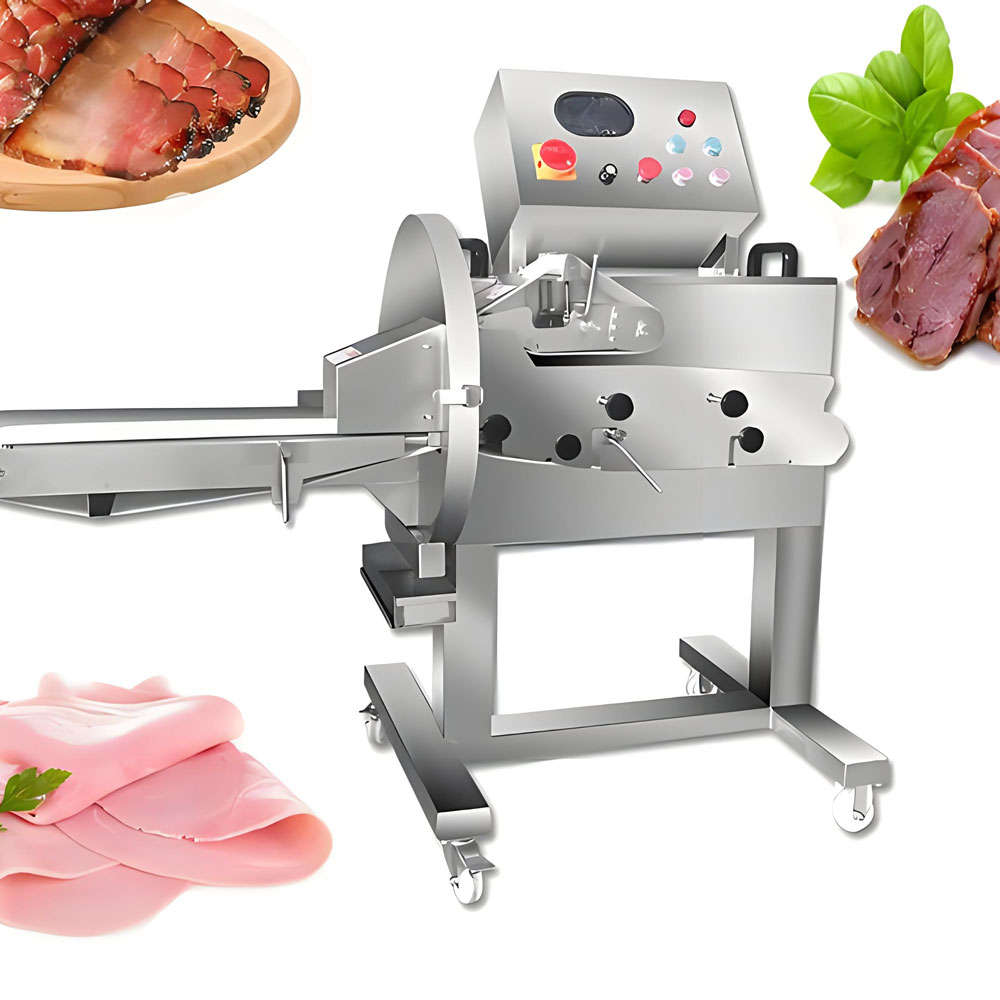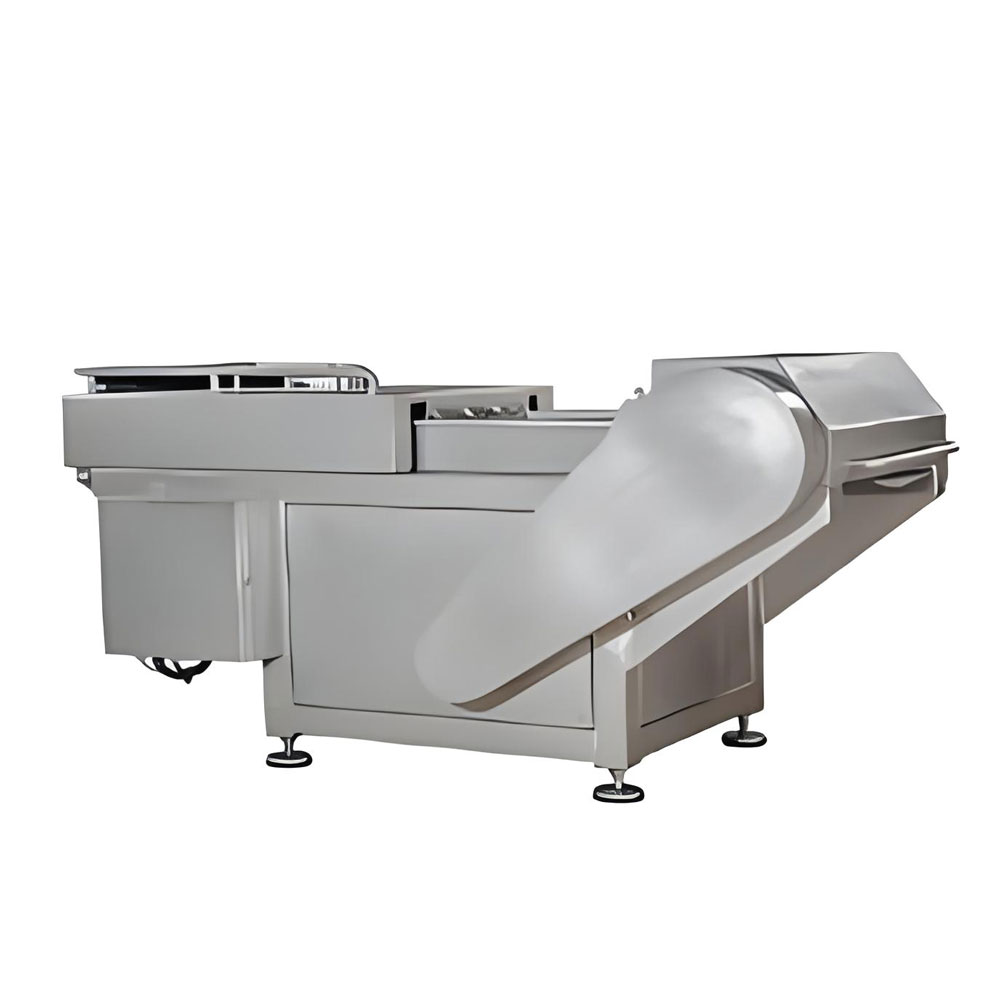Meat slicing equipment is essential in both commercial and home kitchens, facilitating the efficient and precise cutting of meats, cheeses, and other deli products. One common question that arises is whether there is a standard width measurement used in these machines. This article delves into the specifics of meat slicers, exploring their standard measurements, features, variations, and the importance of choosing the right slicer for your needs.

1. Introduction to Meat Slicing Equipment
History and Evolution
The use of meat slicing equipment dates back to the early 20th century when the need for efficient meat processing became evident. The first mechanical meat slicer was invented by Wilhelm van Berkel in 1898. His innovation revolutionized the way meats were sliced, leading to greater efficiency and precision in the food industry.
Importance in Culinary Practices
Meat slicers are indispensable in both professional kitchens and home settings. They provide uniform slices, which is crucial for presentation, cooking times, and portion control. Whether you're preparing a charcuterie board or slicing deli meats for sandwiches, a meat slicer ensures consistency and quality.

2. Types of Meat Slicers
Manual Meat Slicers
Manual meat slicers are operated by hand, offering more control over the slicing process. They are ideal for smaller volumes of slicing and are often favored by home cooks and small delis.
Automatic Meat Slicers
Automatic meat slicers are equipped with motors that drive the slicing action, making them suitable for high-volume commercial use. They provide consistent slices with minimal manual effort.
Specialty Meat Slicers
These slicers are designed for specific types of products, such as frozen meats or cheeses. They often come with specialized blades and settings to handle the unique properties of these foods.

3. Key Features of Meat Slicers
Blade Types and Sizes
The blade is the most critical component of a meat slicer. Blades typically range from 8 to 14 inches in diameter. Larger blades are used for commercial slicers, while smaller blades are sufficient for home use.
Thickness Control Settings
Modern meat slicers come with adjustable thickness settings, allowing users to control the width of each slice. This feature is essential for achieving the desired slice thickness for different types of meats and recipes.
Motor Power and Speed
The motor's power affects the slicer's efficiency and ability to cut through various types of meat. High-powered motors are necessary for commercial slicers that handle large volumes and tough meats.
Safety Features
Safety is paramount when using meat slicers. Features such as blade guards, non-slip feet, and safety switches are designed to protect users from accidents and injuries.
4. Standard Width Measurements in Meat Slicers
Definition and Importance
Standard width measurement refers to the consistent thickness that a slicer can achieve. This measurement is crucial for ensuring uniform slices, which is important for both aesthetics and cooking purposes.
Common Standard Widths
Most meat slicers offer thickness settings ranging from 0.5mm to 25mm. The exact width may vary depending on the model and manufacturer, but these ranges cover most slicing needs.
Industry Guidelines and Regulations
There are no strict industry-wide regulations for meat slicer width measurements, but manufacturers often adhere to common standards to meet consumer expectations and ensure compatibility with various food service applications.
5. Factors Affecting Width Measurements
Type of Meat
Different meats have varying textures and densities, which can affect the slicing process. For instance, cured meats may require thinner slices, while roast beef might be sliced thicker.
Intended Use (Commercial vs. Home Use)
Commercial slicers often have more precise and extensive thickness settings compared to home models. This is due to the higher demand for consistency and volume in commercial settings.
User Preferences
Individual preferences also play a role in determining the ideal slice thickness. Some users may prefer thinner slices for sandwiches, while others might opt for thicker cuts for grilling.
6. Choosing the Right Meat Slicer
Assessing Your Needs
Determine the primary use of the slicer. Are you slicing meats for a restaurant, deli, or home kitchen? Understanding your needs will help narrow down the options.
Comparing Different Models
Compare various models based on features, specifications, and customer reviews. Look for slicers that offer the desired blade size, motor power, and thickness settings.
Budget Considerations
Meat slicers come in a wide price range. Set a budget and find a slicer that offers the best value within your price range. Remember that higher-priced models often provide better performance and durability.
Maintenance and Durability
Consider the ease of cleaning and maintaining the slicer. Models with removable blades and parts are easier to clean. Also, check for the durability of materials and construction to ensure long-lasting use.
7. Benefits of Using Meat Slicers
Efficiency and Speed
Meat slicers significantly reduce the time and effort required to slice meats, making them ideal for busy kitchens. They also ensure a higher output compared to manual slicing.
Consistency in Slices
Achieving uniform slices is crucial for both presentation and cooking. Meat slicers provide consistent thickness, enhancing the overall quality of the dish.
Versatility in Food Preparation
Beyond meats, slicers can be used for cheeses, vegetables, and breads. This versatility makes them valuable tools in any kitchen.
8. Popular Brands and Models
Overview of Leading Brands
Brands like Berkel, Hobart, and Chef's Choice are renowned for their high-quality meat slicers. Each brand offers a range of models catering to different needs and budgets.
Detailed Reviews of Top Models
Berkel 825A
Features: 10-inch blade, adjustable thickness, built-in sharpener
Pros: Durable, easy to clean, precise slicing
Cons: Higher price point
Hobart EDGE12
Features: 12-inch blade, automatic operation, safety interlocks
Pros: Powerful motor, consistent performance, safety features
Cons: Requires regular maintenance
Chef's Choice 615A
Features: 7-inch blade, tilted food carriage, easy to clean
Pros: Affordable, compact design, suitable for home use
Cons: Limited slicing thickness range
Customer Feedback and Ratings
Customer reviews provide valuable insights into the performance and reliability of different models. Look for slicers with high ratings and positive feedback regarding ease of use, durability, and slice quality.
9. Maintenance and Care of Meat Slicers
Cleaning Procedures
Regular cleaning is essential to maintain hygiene and performance. Disassemble the slicer according to the manufacturer's instructions and clean each part thoroughly with warm, soapy water.
Regular Maintenance Tips
Sharpen the blade regularly to ensure clean cuts.
Lubricate moving parts to prevent wear and tear.
Inspect the slicer for any damage or loose parts before each use.
Troubleshooting Common Issues
Common issues include uneven slicing, motor overheating, and blade dullness. Refer to the user manual for troubleshooting tips or contact the manufacturer for support.
10. Conclusion
Recap of Key Points
Meat slicers are invaluable tools in both commercial and home kitchens, offering efficiency, consistency, and versatility. Understanding the standard width measurements and features of meat slicers helps in choosing the right model for your needs.
Final Recommendations
Consider your slicing needs, budget, and the features of different models before making a purchase. Investing in a high-quality meat slicer can enhance your culinary experience and streamline food preparation.
Future Trends in Meat Slicing Equipment
Advancements in technology are likely to bring more innovative features to meat slicers, such as digital controls, improved safety mechanisms, and enhanced durability. Staying updated with these trends can help you make informed decisions when upgrading your equipment.



















